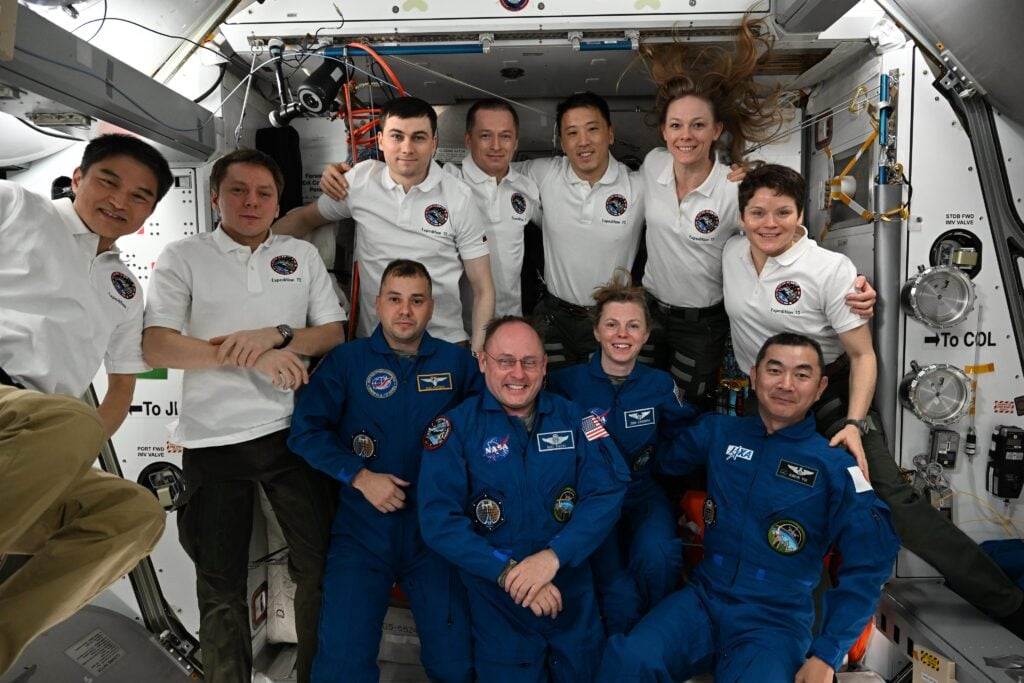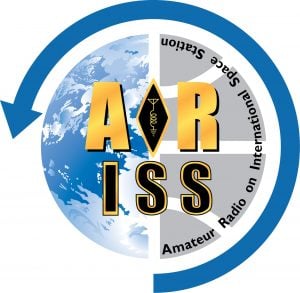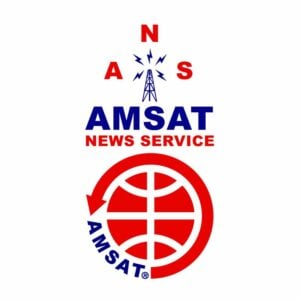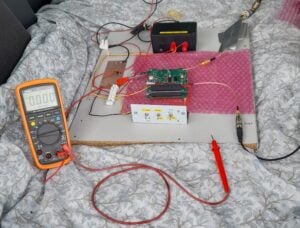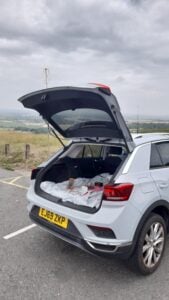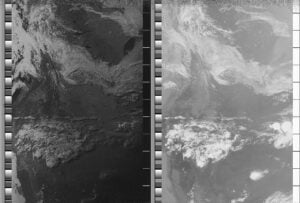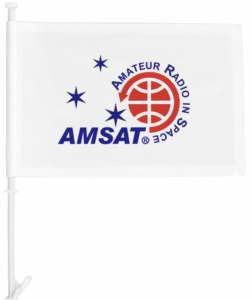In this edition:
* JAMSAT’s Blueberry JAM Project to Develop Open-Source CubeSat Transponders for Amateur Radio
* Amateur Weather Satellite Reception Opportunities Beyond the Retired POES Fleet (NOAA-15/18/19)
* Meteoglider Offers Reusable Radiosonde Alternative for High-Altitude Weather Data Collection
* SpaceX’s Starship Flight 10 to Demonstrate Expanded Booster and Upper Stage Test Objectives
* Changes to AMSAT-NA TLE Distribution for August 22, 2025
* ARISS News
* AMSAT Ambassador Activities
* Satellite Shorts From All Over
The AMSAT News Service bulletins are a free, weekly news and information service of AMSAT, the Radio Amateur Satellite Corporation. ANS publishes news related to Amateur Radio in Space including reports on the activities of a worldwide group of Amateur Radio operators who share an active interest in designing, building, launching and communicating through analog and digital Amateur Radio satellites.
The news feed on https://www.amsat.org publishes news of Amateur Radio in Space as soon as our volunteers can post it.
Please send any amateur satellite news or reports to: ans-editor [at] amsat.org
You can sign up for free e-mail delivery of the AMSAT News Service Bulletins via the ANS List; to join this list see: https://mailman.amsat.org/postorius/lists/ans.amsat.org/
ANS-236 AMSAT News Service Weekly Bulletins
To: All RADIO AMATEURS
From: Radio Amateur Satellite Corporation
712 H Street NE, Suite 1653
Washington, DC 20002
DATE 2025 Aug 24
JAMSAT’s Blueberry JAM Project to Develop Open-Source CubeSat Transponders for Amateur Radio
The Japan Amateur Satellite Association (JAMSAT) has announced the launch of the “Blueberry JAM” initiative, a new project to design and build an open-source multi-mode transponder for CubeSats. A kickoff meeting was held on May 3 with 15 participants, marking the start of what is envisioned as a flagship development effort for the organization.
The Blueberry JAM project centers on creating a versatile linear transponder that can be integrated into 1U CubeSats, while also being scalable to larger 3U and 6U platforms. The design is intended to support both traditional linear operation and potential digital enhancements, such as delay modes and data handling. The first demonstration unit—an engineering model—is targeted for completion by mid-2026 and will be offered to universities and satellite developers for potential flight opportunities.
Jerry Buxton, N0JY, AMSAT VP-Engineering commented, “AMSAT-NA is excited to see the Japan Amateur Satellite Association’s commitment to open-source development and collaboration with amateur satellite organizations around the world with their Blueberry JAM initiative.
“We are pleased to offer our help in this collective effort by providing JAMSAT with any schematics and documentation from AMSAT’s open-source/open-access projects developed to date as well as those being introduced this year.
“This includes our flight-proven LTM-2 Linear Transponder Module that has flown successfully on satellites deployed by two world-class universities and currently still operating on MO-122 and MESAT1. LTM provides telemetry downlink support for the host science missions and satellite health, as well as direct control of the LTM amateur radio usage. A third university is set to carry the latest version of LTM, which will fly on GOLF-TEE and Fox-Plus, on their upcoming mission that is currently under construction.”
A core philosophy of the project is openness. JAMSAT has pledged to make the development process, design documents, and results available to the amateur community. Hardware costs are expected to be covered by JAMSAT, while individual participants will bear their own incidental expenses. By sharing the design broadly, the group hopes to encourage adoption by multiple satellite missions, with a goal of eventually deploying the transponder on as many as 10 spacecraft.
Technical discussions during the kickoff highlighted the demand for new linear transponder capability in amateur satellites, as well as recognition that digital features will be important for future operations. Considerations include dual-channel command and data handling, efficient microcontroller use, and antenna and power system constraints inherent to CubeSats. The team also noted the potential to establish a ground-based test station to exercise the transponder under realistic conditions before flight.
Buxton also said, “We are also very happy to share AMSAT’s work on its upcoming SDR GEN-2, an SDR that provides all-mode functionality and continuous coverage from 144 MHz to 6 GHz providing “Five & Dime” capability in a format to fit 1U or larger CubeSats.
“We look forward to supporting JAMSAT in promoting more international collaborations that continue to Keep Amateur Radio in Space!”
Coordination for the project will be managed initially through mailing lists, with Slack and other online tools supporting more detailed technical exchanges. Meetings will be held on an ad-hoc basis until a regular schedule is established. Participants also suggested supplementary seminars to review background information and prior work for the benefit of newer contributors.
By positioning Blueberry JAM as a fully open-source design, JAMSAT hopes to strengthen international collaboration and demonstrate Japan’s continued leadership in the amateur satellite community. With a development horizon stretching into 2026 and beyond, the project has the potential to become a cornerstone payload for future CubeSat missions and to provide valuable new communication opportunities for amateur operators worldwide.
[ANS thanks JAMSAT and Jerry Buxton, NØJY, AMSAT VP-Engineering for the above information]
Amateur Weather Satellite Reception Opportunities Beyond the Retired POES Fleet (NOAA-15/18/19)
With the retirement of NOAA-15, NOAA-18, and NOAA-19, the long-running POES (Polar-orbiting Operational Environmental Satellites) series has officially ended service. Some in the community worry this marks the end of easily accessible weather imagery, but the outlook for amateur reception remains bright.
Russia’s Meteor-M satellites are now the mainstay for 137 MHz reception. Their LRPT signals are strong and reliable, and with additional Meteor-M launches planned, service is expected to continue well into the 2040s. Higher-resolution imagery is also available on the 1.7 GHz band for those with modest upgrades in equipment.
Europe’s Metop series continues to transmit on L-band, with Metop-B and -C expected to operate until 2027 and 2030. The newly launched Metop-SG satellites will extend coverage for another decade, ensuring continuity for hobbyists. In addition, the Arctic Weather Satellite and its planned successors (the STERNA series) will provide valuable radiometric data for weather monitoring.
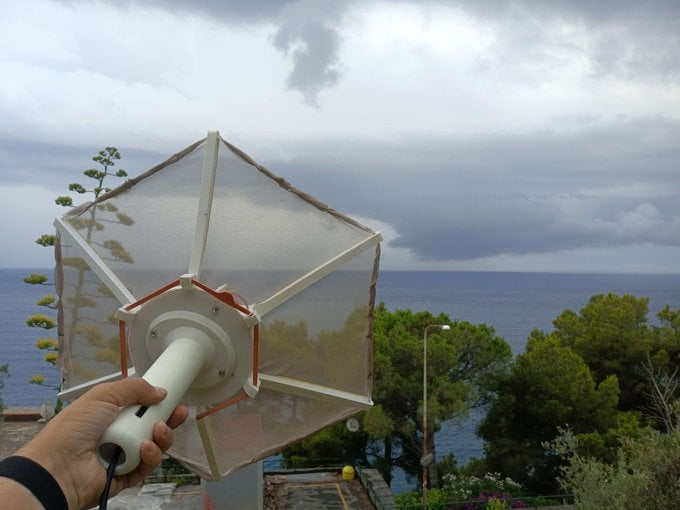
Geostationary satellites also provide opportunities. Russia’s Elektro-L constellation broadcasts HRIT/LRIT on 1691 MHz, with a new spacecraft (N°5) scheduled for launch this October. For those in the Americas, the GOES series will remain active through the 2030s, continuing HRIT and GRB service. The U.S. Space Force’s EWS-G program further adds to the options, re-tasking former GOES satellites for continued imagery.
China’s FengYun-3 satellites and Korea’s GK-2A also contribute, while future developments in X-band reception are lowering the barrier for amateurs interested in higher-resolution Earth observation. Advances in software such as SatDump are making it easier than ever to decode and process these signals on affordable hardware.
The decommissioning of the POES fleet marks the end of an era, but not the end of the hobby. With a diverse mix of active and planned satellites across multiple bands, amateur weather satellite reception will remain an active part of the hobby, supported by a mix of current satellites and future missions. For those interested in exploring these opportunities, the open-source SatDump software can be used to decode imagery from many of the satellites mentioned above. SatDump is available for download at https://www.satdump.org.
Read the full article at: https://www.satdump.org/posts/beyond-poes-amateur-satellite-reception/
[ANS thanks lego11, SatDump.com, and the SatDump community for the above information]
Meteoglider Offers Reusable Radiosonde Alternative for High-Altitude Weather Data Collection
Swiss weather intelligence company Meteomatics has unveiled the Meteoglider, a reusable glider platform designed to improve the way atmospheric data is gathered. Introduced in the spring of 2025, the Meteoglider advances the familiar radiosonde concept with a sustainable, GPS-guided recovery capability that promises significant operational and environmental benefits.
Radiosondes carried aloft by weather balloons have long provided vital measurements of temperature, humidity, pressure, and wind conditions. These instruments supply essential input for forecasts, climate models, and atmospheric studies. However, conventional radiosondes are almost always lost after deployment. Out of approximately 600,000 units launched worldwide each year, an estimated 80 percent are never recovered, leaving most as non-reusable debris.
The Meteoglider overcomes this challenge by gliding back under control after its flight. Constructed of lightweight foam and weighing only 250 grams, the vehicle ascends to heights of about 110,000 feet before release. Guided by GPS, the Meteoglider can return to its launch point or a designated location, typically completing the descent in around 25 minutes while reaching speeds of nearly 460 feet per second.
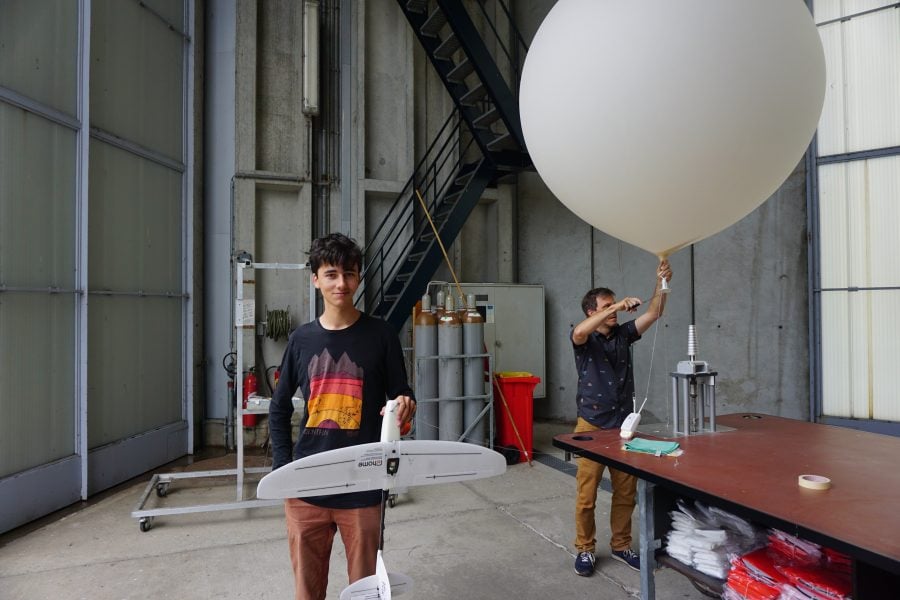
Another advantage is the practicality of operation. Meteogliders do not require special flight permissions and can be deployed as readily as conventional balloon-borne instruments. Their recoverability reduces waste, lowers operating costs, and minimizes the environmental footprint associated with routine meteorological monitoring.
The technology originated with Swiss startup R2Home, which Meteomatics acquired in late 2024 following a $22 million funding round. Together with the company’s established Meteodrone system, Meteogliders represent a new chapter in scalable, sustainable atmospheric sensing. By combining innovation with proven methods, Meteomatics aims to reshape global weather intelligence practices with tools that are both economical and environmentally responsible.
Read the full article at: https://www.aerotime.aero/articles/meteomatics-unveils-the-meteoglider-a-high-altitude-weather-data-revolution
[ANS thanks Miquel Ros, AeroTime.com, and Meteomatics for the above information]
SpaceX’s Starship Flight 10 to Demonstrate Expanded Booster and Upper Stage Test Objectives
SpaceX is preparing for the tenth integrated test flight of its Starship Super Heavy launch system from Starbase, Texas. Liftoff is targeted for Sunday, August 24, 2025, with a launch window from 6:30 to 7:30 p.m. Central Time. A live webcast will begin approximately 30 minutes before liftoff and will be available on the SpaceX website and X (formerly Twitter) @SpaceX. As with all developmental testing, schedules remain dynamic and subject to change.
This mission follows the completion of investigations into the loss of Starship on Flight 9 and the Ship 36 static fire anomaly. SpaceX reports that both hardware and operational changes have been implemented to improve reliability, with technical summaries of the investigations available online.
The Super Heavy booster will attempt multiple flight experiments on a trajectory toward an offshore landing point in the Gulf of Mexico. Objectives include a controlled flip and boostback maneuver, first demonstrated on Flight 9, designed to conserve propellant and increase payload capacity. These trials are aimed at expanding the operational envelope and validating booster recovery techniques for future missions.
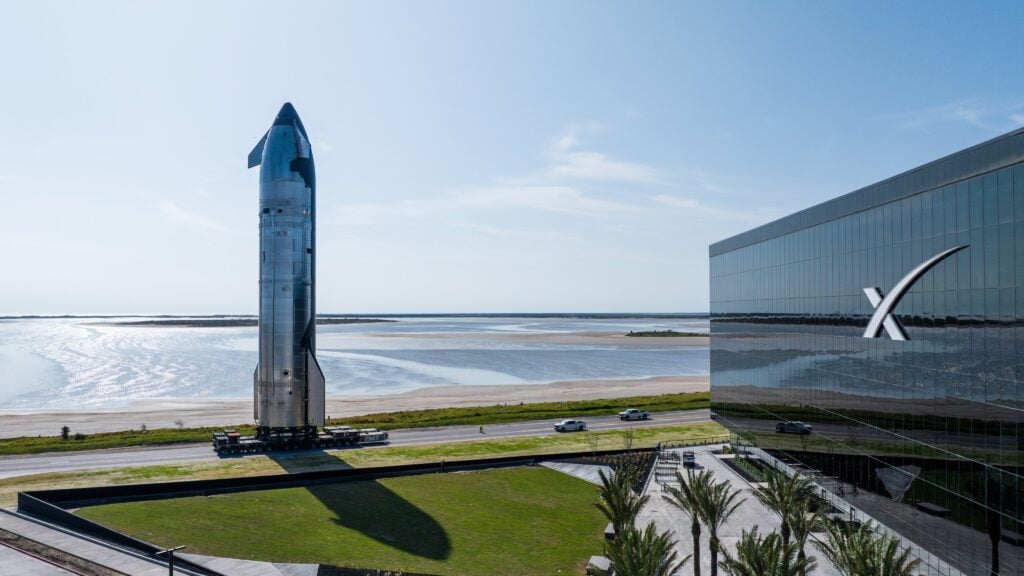
The Starship upper stage will attempt several in-space demonstrations, including the deployment of eight Starlink mass simulators, a Raptor engine relight, and multiple reentry experiments. To stress-test the thermal protection system, a significant number of heat shield tiles have been removed, while metallic tile alternatives and active cooling systems will be evaluated. These measures are intended to expose vulnerabilities and refine reentry survivability.
Additional objectives include testing functional catch fittings and assessing rear flap performance during maximum entry dynamic pressure. According to SpaceX, these experiments are vital steps toward the development of a rapidly reusable launch system. With manufacturing ramping up at Starfactory in Texas and new launch infrastructure under construction in both Texas and Florida, Starship continues to progress toward operational readiness for future missions.
See the official SpaceX update page at: https://www.spacex.com/launches/starship-flight-10 …and maybe check out the SpaceX Shop for a new T-shirt while you’re at it.
[ANS thanks SpaceX for the above information]
The 2025 AMSAT President’s Club Coins Have Just Arrived!
Celebrating the 40th Anniversary of Amateur Radio on Human Spaceflight
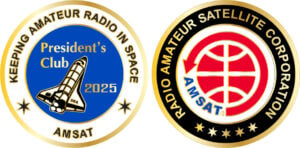
Help Support GOLF and Fox Plus.
Join the AMSAT President’s Club today!
Changes to AMSAT-NA TLE Distribution for August 22, 2025
Two Line Elements or TLEs, often referred to as Keplerian elements or keps in the amateur community, are the inputs to the SGP4 standard mathematical model of spacecraft orbits used by most amateur tracking programs. Weekly updates are completely adequate for most amateur satellites. TLE bulletin files are updated daily in the first hour of the UTC day. New bulletin files will be posted immediately after reliable elements become available for new amateur satellites. More information may be found at https://www.amsat.org/keplerian-elements-resources/.
With HamTV becoming active on ISS, orbital elements are now updated twice daily in www.amsat.org/tle/ at 00:18 and 12:18 UTC. The intention is to have high quality TLE available to accurately calculate doppler shift for the 2.935 GHz downlink. Observations comparing these TLE to those that were calculated based ephemerides and TLE produced by Johnson Space Center the last time HAMTV was active are desired, write jfitzgerald [at] amsat.org
The following satellite has been removed from this week’s distribution:
VERONIKA NORAD Cat ID 58261 Decayed from orbit on or about 15 August 2025
[ANS thanks AMSAT Orbital Elements page for the above information]
ARISS NEWS
Amateurs and others around the world may listen in on contacts between amateurs operating in schools and allowing students to interact with astronauts and cosmonauts aboard the International Space Station. The downlink frequency on which to listen is 145.800 MHz worldwide.
+ Recently Completed
Youngsters On The Air, Jambville, France, Direct via FX5YOTA
The ISS callsign was OR4ISS
The scheduled crewmember was Mike Fincke KE5AIT
The ARISS mentor was F6ICS
Contact was successful: Tue 2025-08-19 09:18:30 UTC
Congratulations to the YOTA students, Mike, mentor F6ICS, and ground station FX5YOTA!
Watch the Livestream at https://www.youtube.com/watch?v=MARkTcR6Njo
NixderStelar (formerly Gemini-1), Lima, Peru, telebridge via VK4KHZ
The ISS callsign was NA1SS
The scheduled crewmember was Zena Cardman KJ5CMN
The ARISS mentor was VE6JBJ
Contact was successful: Wed 2025-08-20 14:07:47 UTC
Congratulations to the NixderStelar students, Zena, and mentor VE6JBJ!
+ Upcoming Contacts
Orion Primary School, Alberton, South Africa, direct via ZS9LSO
The ISS callsign is presently scheduled to be NA1SS
The scheduled crewmember is Mike Fincke KE5AIT
The ARISS mentor is IN3GHZ
Contact is go for: Fri 2025-08-29 09:35:44 UTC
Many times a school may make a last minute decision to do a Livestream or run into a last minute glitch requiring a change of the URL but we at ARISS may not get the URL in time for publication. You can always check https://live.ariss.org/ to see if a school is Livestreaming.
The crossband repeater continues to be active (145.990 MHz up {PL 67} & 437.800 MHz down). If any crewmember is so inclined, all they have to do is pick up the microphone, raise the volume up, and talk on the crossband repeater. So give a listen, you just never know.
The packet system is also active (145.825 MHz up & down).
As always, if there is an EVA, a docking, or an undocking; the ARISS radios are turned off as part of the safety protocol.
Note, all times are approximate. It is recommended that you do your own orbital prediction or start listening about 10 minutes before the listed time.
The latest information on the operation mode can be found at https://www.ariss.org/current-status-of-iss-stations.html
The latest list of frequencies in use can be found at https://www.ariss.org/contact-the-iss.html
[ANS thanks Charlie Sufana, AJ9N, one of the ARISS operation team mentors for the above information]
AMSAT Ambassador Activities
AMSAT Ambassadors provide presentations, demonstrate communicating through amateur satellites, and host information tables at club meetings, hamfests, conventions, maker faires, and other events.
AMSAT Ambassador Clint Bradford, K6LCS, says,
“Think a 75-minute presentation on “working the easy satellites” would be appropriate for your club or event? Let me know by emailing me at k6lcsclint (at) gmail (dot) com or calling me at 909-999-SATS (7287)!”
Clint has NEVER given the exact same show twice: EACH of the 150+ presentations so far has been customized/tailored to their audiences.
Scheduled Events
Northeast HamXposition (HamX) & New England ARRL Convention – August 21st thru 24th, 2025
Best Western Royal Plaza & Trade Center
181 Boston Post Road West
Marlborough, MA 01752
http://www.HamX.org
W1EME, WD4ASW, WB1FJ
Greater Louisville Hamfest – September 6th, 2025
Paroquet Springs Conference Centre
395 Paroquet Springs Drive
Shepherdsville, KY 40165
https://louisvillehamfest.wixsite.com/louisvillehamfest
W4FCL
North Star Radio Convention – October 11th, 2025
Hennepin Technical College
9000 Brooklyn Boulevard
Brooklyn Park, MN 55445
https://northstarradio.org/
ADØHJ
43rd Annual AMSAT Space Symposium & Annual General Meeting – October 16th thru 19th, 2025
Holiday Inn & Suites Phoenix Airport North
1515 North 44th Street
Phoenix, Arizona 85008
Details at https://www.amsat.org/2025-symposium/
Interested in becoming an AMSAT Ambassador? AMSAT Ambassadors provide presentations, demonstrate communicating through amateur satellites, and host information tables at club meetings, hamfests, conventions, maker faires, and other events.
For more information go to: https://www.amsat.org/ambassador/
[ANS thanks Bo Lowrey, W4FCL, Director – AMSAT Ambassador Program, for the above information]
AMSAT Remove Before Flight Key Tags Now Available
Yes, These are the Real Thing!
Your $20 Donation Goes to Help Fly a Fox-Plus Satellite
Includes First Class Postage (Sorry – U.S. Addresses Only)
Order Today at https://www.amsat.org/product/amsat-remove-before-flight-keychain
Satellite Shorts From All Over
+ The United States is racing to be the first nation to deploy a nuclear reactor on the lunar surface, following new orders from Acting NASA Administrator Sean Duffy. His directive, issued July 31, calls for fast-tracking lunar nuclear power to stay ahead of China and Russia, who have announced joint plans to build a reactor by the mid-2030s. Duffy warned that if rivals succeed first, they could impose “keep-out zones” that would threaten U.S. access and undermine the Artemis program, which aims to return astronauts to the moon in 2027. The order requires NASA to appoint a program leader within 30 days and expands on previous work with the Department of Energy to develop fission surface power producing at least 40 kilowatts of power. Since long-term lunar operations are estimated to require at least 100 kWe (100 kilowatts of electrical power, or about the consumption of 80–100 U.S. homes), nuclear power is seen as critical for sustaining life on the moon and enabling future Mars missions. In addition, Duffy issued a separate directive to speed up commercial space station development as the International Space Station nears retirement by 2030. (ANS thanks CNN for the above information)
+ SpaceX successfully launched the U.S. Space Force’s X-37B spaceplane aboard a Falcon 9 rocket from Kennedy Space Center on August 21, 2025, marking the start of its eighth mission. The booster, making its sixth flight, landed at Cape Canaveral Space Force Station just over eight minutes after liftoff. The Boeing-built X-37B, part of a two-vehicle fleet, has previously flown missions lasting between 224 and 909 days, though the duration of this new mission is undisclosed. This flight will test advanced technologies, including high-bandwidth laser communications with commercial satellite networks in low Earth orbit, offering faster and more secure data transfer than radio frequencies. It will also demonstrate a quantum inertial sensor, enabling spacecraft navigation in GPS-denied or deep-space environments. Space Force leaders emphasized that these experiments are key to improving the resilience, adaptability, and operational capabilities of U.S. space systems. (ANS thanks Spaceflight Now for the above information)
+ The newly launched NASA-ISRO Synthetic Aperture Radar (NISAR) satellite has successfully deployed a record-breaking 39-foot-wide radar antenna in orbit, unfolding it like a blooming umbrella after weeks of careful preparation. Launched on July 30, 2025, from India’s Satish Dhawan Space Centre, the satellite carries two powerful radar systems—L-band from NASA and S-band from ISRO—capable of penetrating clouds, vegetation, and snow to track changes on Earth’s surface. The massive gold-plated wire mesh reflector, weighing 142 pounds, was released through a carefully staged process involving joint-by-joint boom extension and the firing of explosive bolts. It took four days for the structure to fully extend before motors and cables pulled it into its final drum-like shape. NISAR will provide three-dimensional, high-resolution images of Earth’s land and ice, detecting surface shifts as small as fractions of an inch. By late fall, scientists expect the satellite to begin delivering transformative data, including 3D “movies” of environmental changes across the globe. (ANS thanks Gizmodo for the above information)
Join AMSAT today at https://launch.amsat.org/
In addition to regular membership, AMSAT offers membership to:
* Societies (a recognized group, clubs or organization).
* Primary and secondary school students are eligible for membership at one-half the standard yearly rate.
* Post-secondary school students enrolled in at least half-time status shall be eligible for the student rate for a maximum of 6 post-secondary years in this status.
* Memberships are available for annual and lifetime terms.
Contact info [at] amsat.org for additional membership information.
73 and remember to help Keep Amateur Radio in Space!
This week’s ANS Editor, Mitch Ahrenstorff, ADØHJ
mahrenstorff [at] amsat.org

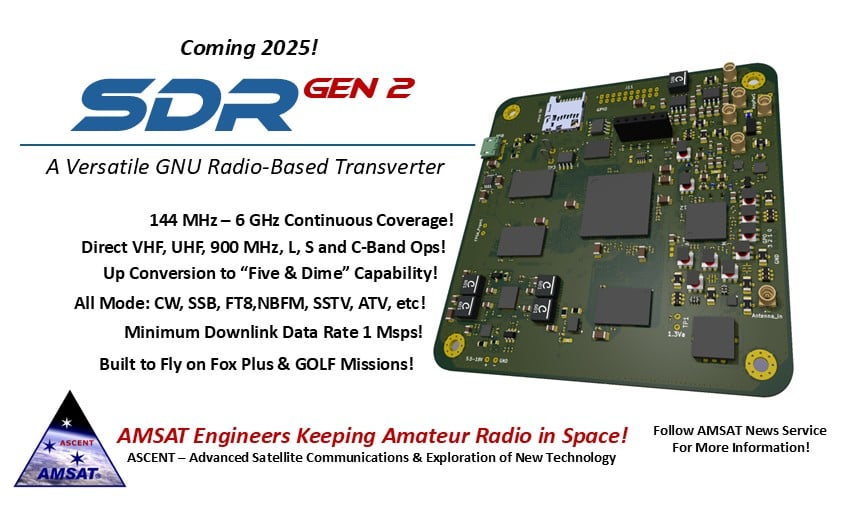

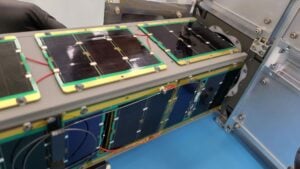
 Purchase M2 LEO-Packs from the AMSAT Store.
Purchase M2 LEO-Packs from the AMSAT Store. 

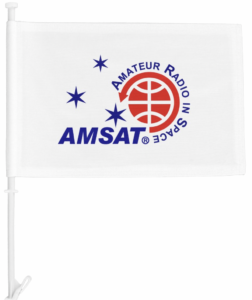

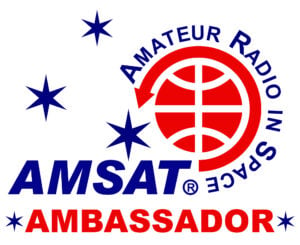


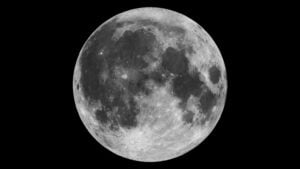 (Photo credit: NASA)
(Photo credit: NASA)